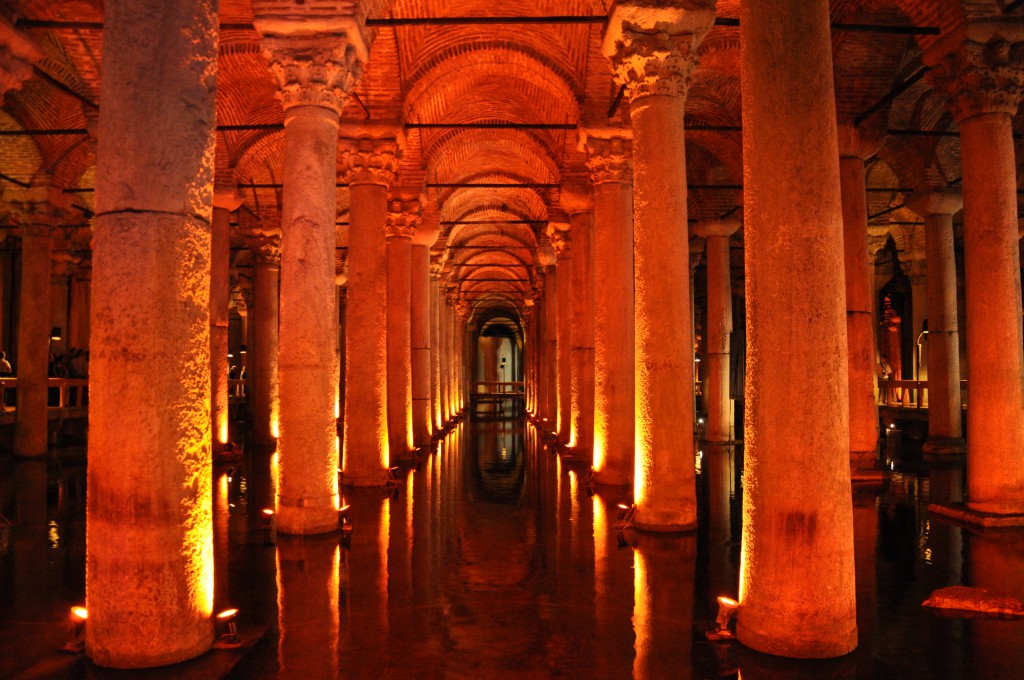Sometimes I wonder at the things that people get hung up on when it comes to photography. Things like “I don’t have the right equipment” (doesn’t matter!) or “I forgot my tripod” are poor excuses to making a decent photograph. Even shooting on ‘auto’ mode, most of the time just turning off the flash (which most cameras allow) will help. Here are a couple of tips that have helped me.
If you don’t have a super-high-quality sensor (e.g. a full-frame (FX) camera), you’re at a disadvantage in low-light situations. However, even if you don’t have a tripod, one trick is to balance you or the camera on something stable to get a good exposure. The below was taken underneath the Hagia Sophia in Istanbul. I had a Nikon D90 at the time, and while it’s a pretty decent camera in most low-light situations, there just wasn’t enough light to make a decent exposure. Therefore, I balance the camera on one of the handrails to get a decent photo:
There are a couple other tips to keep in mind for balancing the camera, and not just for low-light situations. Even shooting in daylight, sometimes it’s hard to get a clean shot off – especially when capturing moving subjects. You can always lean against a doorway or building or signpost or something to help stabilize your camera. Also, most of the ‘camera shake’ actually occurs in the lens, so make sure you support the lens of the camera too. In addition to tripods, you can also use other things to attach the camera to a stable surface. You can also use bean-bags or your camera bag as a ‘shock-absorber’ to reduce the amount of muscle movements that make it into your frame. Finally, in low-light especially, it pays to pre-focus the camera (if you’re shooting moving subjects it’s almost mandatory in these situations) because you’ll lose a lot of time with most cameras “hunting” for focal points in the low light. A related point (which I’ll cover in my next post) that can help is if you learn how to shoot manually with your camera – auto is NOT always the best option for low-light photography!
What are some of your tips for steadying your equipment? Leave your tips in the comments, and they’ll be duly ignored! ;-)
